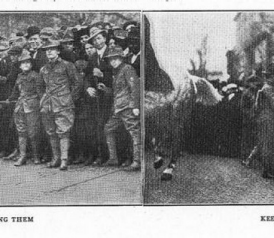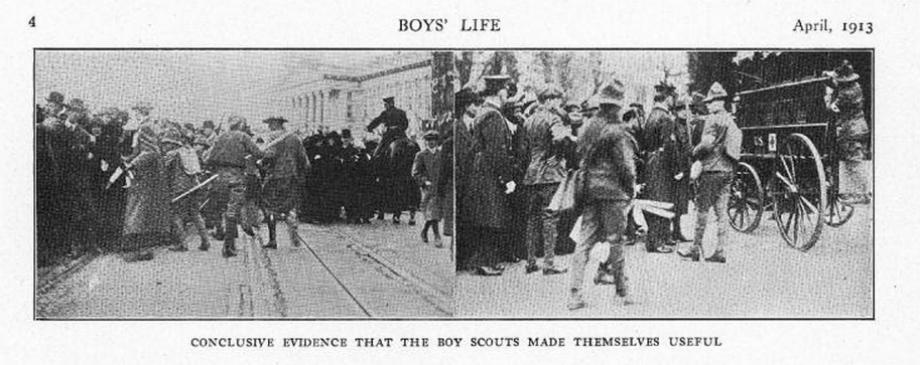How the Boy Scouts Became the Heroes of the 1913 Parade for Women's Suffrage
The Vault is Slate's new history blog. Like us on Facebook; follow us on Twitter @slatevault; find us on Tumblr. Find out more about what this space is all about here.
This past weekend was the centennial anniversary of the first national parade for women’s suffrage, held in Washington, D.C., on March 3, 1913, the day before Woodrow Wilson’s inauguration. (You can see more pictures of the event here.) Between 5,000 and 8,000 marchers faced crowds of raucous male spectators in town for the inauguration. These onlookers assaulted the protesters physically, blocked their way, and yelled insults. At least 100 marchers were injured and hospitalized.
While the police were at best unprepared and at worst unsympathetic to the protesters’ plight, the unexpected heroes of the march were 1,500 Boy Scouts who had volunteered to help law enforcement during the inauguration.
The official Scout magazine, Boys’ Life, featured a four-page article about the Scouts’ actions during the parade in its April 1913 issue. (These pictures, of Boy Scouts battling the crowds and assisting ambulances, are taken from that piece.) The magazine reported that the Scouts were asked to present themselves in full uniform with their staves (part of their official dress). While the police initially told the Scouts to stay behind their lines, Boys’ Life reported, the crowd was soon too much for law enforcement.
[Police] were soon begging the scouts to help them and borrowing their staves…[Scouts] found the task of keeping the way open for the parade was, in itself, tremendous, but in addition they had to render first aid in hundreds of incidents…There is record that one boy handled sixteen cases of fainting.
A Senate subcommittee appointed to investigate the poor treatment of the marchers heard multiple mentions of the Scouts. Mrs. Keppel Hall, a demonstrator from Dayton, Ohio, told the senators:
[The Scouts] were working so hard. I noticed them all along the line, and was interested in them because they appeared to be doing all the work. Even those small boys were succeeding in holding back the crowd whenever they pressed themselves forward.
As a young organization (founded only three years earlier), the Boy Scouts of America relished the good press. The Boys’ Life article concluded:
Washington and its respectable visitors will not soon forget the spectacle of boys in the uniform that stands for learning the principles of good citizenship actually restraining grown men from acting the part of brutes.


